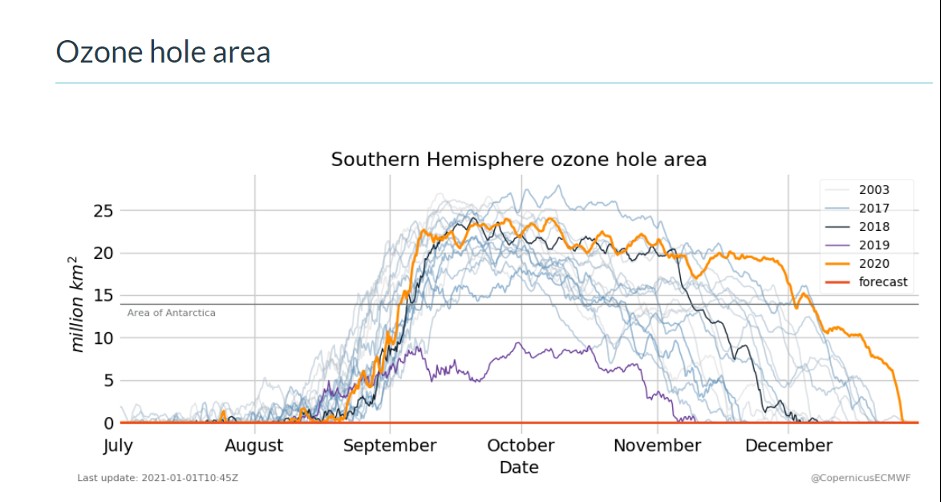PREVIOUS
Antarctic Ozone Hole
January 13 , 2021
1803 days
1536
0
- One of the deepest and the largest gap in the ozone layer - Antarctic ozone hole - has closed.
- The annually occurring ozone hole over the Antarctic had rapidly grown from mid-August and peaked in early October 2020.
- The expansion of the hole was driven by a strong, stable and cold polar vortex and very cold temperatures in the stratosphere.
- The same meteorological factors also contributed to the record 2020 Arctic ozone hole, which has also closed.
- A polar vortex is a wide expanse of swirling cold air, a low-pressure area, in Polar Regions.
- During winters, the polar vortex at the North Pole expands, sending cold air southward.
- An ozone hole is the thinning of the ozone layer
- It was boosted in size by colder temperatures.
- As the temperatures high up in the stratosphere starts to rise, ozone depletion slows, the polar vortex weakens and breaks down.
- Human-made chemicals migrate into the stratosphere and accumulate inside the polar vortex.
- It begins to shrink in size as warmer temperatures dominate.
- The 2020 Antarctic hole was unprecedented as the polar vortex kept the temperature of the ozone layer cold.

Leave a Reply
Your Comment is awaiting moderation.


